Río+20: the future we want?
‘The Future We Want’ –the main result from Rio+20— has generated disappointment in many people for it seems to be proposing the opposite of what the title suggests. This work first analyzes some partial positive and negative aspects of the document, and then explains the rationale for this disappointment from an economic perspective: the 16 references that document makes to ‘sustained economic growth’ as a necessity for sustainable development. The conclusion is that not much can be expected from large deals between worldwide governments. Local communities –the real leaders in the way to sustainable development— can hardly expect the support from such treaties. Governments, on their side, will remain using the same recipes to solve the problems that those recipes have caused.
Remarkable aspects in ‘The Future We Want’
Part of the good points and disappointments in the Rio +20 Declaration ‘The Future We Want’ below are gathered from Stakeholder Forum’s Farooq Ullah.
There are some good points (remarkably the first two below):
– It strengthens and enhances the position of UNEP within the UN organization, establishing universal participation in it and providing it with more funds.
– It opens a process for establishing a set of Sustainable Development Goals to replace the Millennium Development Goals when they expire –with many failures— by 2015.
-A paragraph in the Declaration “encourage(s) companies, where appropriate, especially publicly listed and large companies, to consider integrating sustainability information into their reporting cycle”.
– It confirms the will to eliminate subsidies that contribute to illegal, unreported, and unregulated fishing, wasteful consumption or inefficiencies in international trade.
There are also come disappointments:
– The language on the right to water and sanitation is vague and evasive. The text reaffirms commitments which are not universally agreed, rather than affirming the right itself.
– The right to reproductive health was removed due to the pressure from some lobbies – namely the Vatican.
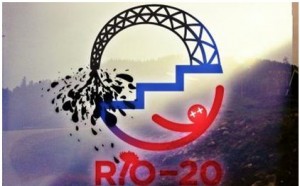 – It is very worrying that, despite 20 years of talking about it, there is no action plan for eliminating environmental harmful subsidies to fossil fuels. The amount spent on these subsidies would go a long way to providing the financing for the transition to a sustainable world. In fact, the means of implementation remain weak.
– It is very worrying that, despite 20 years of talking about it, there is no action plan for eliminating environmental harmful subsidies to fossil fuels. The amount spent on these subsidies would go a long way to providing the financing for the transition to a sustainable world. In fact, the means of implementation remain weak.
– There is no clear statement on the need to remain within environmental limits, thereby defining new pathways to sustainable development.
– The paragraphs regarding a ‘green economy in the context of sustainable development and poverty eradication’ do not give a definition of it, and give a set of low profile guidelines on the characteristics that it should have. All actions are left to the will of the nation states, thus spoiling any approach to a sovereignty cession from countries to a supranational authority in global, common environmental regards.
The big fiasco
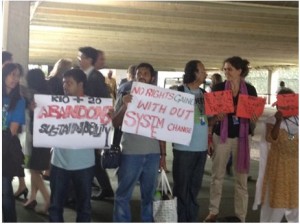 The key point that might gather all the strong disappointment from civil society to ‘The Future We Want’ are the 16 calls that it makes to ‘sustained economic growth’, plus 4 others to ‘economic growth’, as a neeed for sustainability, without conditioning it to its feasibility. Any free-thinking economist knows that a sustained economic growth requires conditions that do not occur in the current economy.
The key point that might gather all the strong disappointment from civil society to ‘The Future We Want’ are the 16 calls that it makes to ‘sustained economic growth’, plus 4 others to ‘economic growth’, as a neeed for sustainability, without conditioning it to its feasibility. Any free-thinking economist knows that a sustained economic growth requires conditions that do not occur in the current economy.
The failure of the economy lies in the very first lesson of Economics: it is a science born to solve the problem of resource scarcity. Given that the economy is not yet (and will probably not ever be) able to internalize the environmental scarcity –which did not even partially seek to until the Kyoto Protocol, and then failed dramatically— and not being labor a scarce resource –on the contrary, scarce is precisely its counterpart: the employment—, the economy is at the service of the two other group of resources considered by traditional Economics: capital and land; and, among these, evidences like speculation on real estate or the purchase of massive African territory by China make clear which predominates. When a part of a system fails, it fails as a whole, and therefore the economy (particularly the neoliberal) does not serve to its purpose: the allocation of resources; not to say optimum, but even tolerable by the overall system it belongs to: the biosphere. The return of capital are the interests and these need borrowing, which in turn requires an economic growth big enough to guarantee that in the future we will pay for what we will then spend plus for what we now cannot pay. The problem is that, in that future, the capital will continue to need borrowing, and therefore more growth. Continued growth is not viable in a world with limited resources that the economy does not consider. The higher the growth, the more it will be at the expense of those resources that are not considered: the environment and the labor. On the first, by failing to amortize the basis of physical resources that production wears off, economic growth consumes it until its destruction. And on employment, unless a legislation as unlikely to happen as a substantial reduction of working hours available makes labor scarce again, growth will be at the expense of the total wage bill – in other words it will create more unemployment, lower wages or any combination of both. This very basic reflection based on the economic theory makes clear that sustained economic growth is not only impracticable, but, given the current (im)balance of resources, it is aimed at the service to the capital, to the detriment of those resources that the economy does not consider: environment and labor. Only the capital who needs growth; neither the labor of the environment need it.
The Brundtland report in 1987 not only gave the most widely accepted definition of sustainable development (SD) as a “development which meets the needs of the present without compromising the ability of future generations to meet their own needs”, but in the second chapter, it devoted over 20 pages to clarify the concept. Besides other interesting notes, now relevant is the paragraph that reads: “(…) sustainable development clearly requires economic growth in places where such needs are not being met. Elsewhere, it can be consistent with economic growth, provided the content of growth reflects the broad principles of sustainability and non-exploitation of others.” Economic growth is therefore not imperative in developed countries, where basic needs are usually met. The report suggests that a minimum of economic growth, as required by financial institutions, can be environmentally sustainable only if industrialized nations shift their growth towards less material and energy intensive activities.
There are two arguments that might make economic growth compatible with sustainable development in rich countries: the dematerialization of growth and technological progress. But, as I will explain, both are too weak to be relied upon.
Daly and Townsend explain how that dematerialization is indeed an unattainable concept, since growth that aims to satisfy the needs of the poor should be based on things they need, which are not precisely information services but material things like food, clothing and shelter. To make room for the pollution and resource use that the manufacturing of these products for poor countries generates, it is clear that rich countries must reduce their pollution at least equivalently. This is a strong conditioning to rich countries’ economic growth, for the reasons that follow. If economic growth was not based on resource use, there would be no problem. Some environmental stakeholders (remarkably the World Bank) have long defended in past decades the existence of an Environmental Kuznets Curve that, in the long term, would revert the link between economic growth and environmental degradation through a dematerialization of the economy; but this theory has long been refuted by theory and experience. Numerous calls have been made to the decoupling of the economy from resource use, but resources remain being borrowed from the future at an increasing rate. It is essential to distinguish between relative and absolute decoupling. There are thousands of cases of decreased intensity in resource use per output unit (relative decoupling), but the increases in the scale of global economic activity cancel these improvements. Jackson estimates that, in order to stabilize the climate in a world with 9 billion habitants with revenues as the EU average in 2008, relative decoupling should occur at a rate 16 times higher than that which has occurred so far.
As for the argument that the technology could save us from climate change, the IPAT identity proves the high infeasibility of this argument, when not only the technology, but also increases in population and affluence (purchasing power) are taken into account. The implications of this theory entail that, in order to achieve a CO2 concentration of 450 ppm (which many consider to be very harmful) by 2050, with economic growth of 2-3% in the developed world and in 5-10% developing countries, required energy efficiency improvements should occur at a rate 11 times higher than currently.
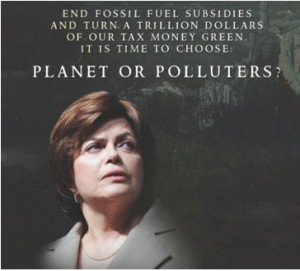 The discourse on the dematerialization of growth or technological progress as ways to make economic growth compatible with sustainable development has proven too weak to be relied upon for overcoming the essential failure of the economy. As Chandran Nair states, “policymakers must concede that economic growth has met its nemesis in climate change, and they should not be seduced by the market’s quick fixes.”
The discourse on the dematerialization of growth or technological progress as ways to make economic growth compatible with sustainable development has proven too weak to be relied upon for overcoming the essential failure of the economy. As Chandran Nair states, “policymakers must concede that economic growth has met its nemesis in climate change, and they should not be seduced by the market’s quick fixes.”
When K. Boulding said that “anyone who believes that exponential growth can go on forever in a finite world is either a madman or an economist”, he was clearly referring only to myopic economists, because those who claimed against the paradigm of economic growth have been many. H.E. Daly (1977) proposed to replace the ‘more is better’ by the much wiser axiom of ‘enough is the best’. Much earlier, J.K. Galbraith (1956) warned that our concern for growth in the number of goods produced, the growth rate of GNP, will –better sooner than later— have to give way to the more important quality of life they provide. J.S. Mill (1848) stated one century before the evidence that the increase of wealth cannot be unlimited. E.F. Schumacher (1989) certifies that a lifestyle that is based on unlimited growth can not last long. Jackson reflects the great challenge of our times: economic growth is necessary for our wrong economy not to collapse, in a world that cannot support that growth without collapsing, for reasons both environmental and social, as follows from some paragraphs above. Jackson concludes that economic growth is not only not the solution to the crisis, but precisely the underlying cause of it. Similar conclusions can be drawn from Azkarraga et al., who explain the reasons of our current global problems analyzing different aspects including the system crisis of values, social and population, and providing with valuable references. Even J.M. Keynes (1935), whose proposals for expansion of public expenditure have been identified as a good part of the cause of the current crisis, called to consider values more important than wealth. He said that the challenge for change does not lie as much in new ideas as in escaping from the old ones, which have grown with us invading every corner of our minds, and railed against orthodox economists whose logic led to the disastrous Great Depression –in a way that shares with the logic which has led to the current crisis the spiral of speculation; with the peculiarity that the ideas that the world now needs to escape from are precisely the ones that his school proposed, that have led to a governments-led speculation.
We are, therefore, watching a case that perfectly matches what Einstein stated: “We can’t solve problems by using the same kind of thinking we used when we created them.” Economic growth, as Bass confirmed, “is viewed more as an inviolable principle that as a solution for the rights of individuals, welfare or environmental degradation.”
Conclusion
Following all the above, The Future We Want might be committing a deep mistake when it says “We also recognize the need to (…) seize and create opportunities to achieve sustainable development through economic growth and diversification, social development and environment protection.” , among other 19 explicit references that the document makes to economic growth, 16 of which specify that it must be sustained; not ‘sustainable’, which would at least be a key conditioning, but ‘sustained’: a real oxymoron. Ban Ki Moon’s statement in 2009 gains sense: “Our foot is stuck on the accelerator and we are heading towards an abyss”.
Since poor countries need economic growth to overcome poverty and the rich do not renounce to economic growth, the prospects of a world driven by these political arrangements are bleak. Being the delivery of a decent world to following generations a categorical imperative (one objective to be pursued without conditions), the reins of development cannot be left to the government leaders who seem not to be able to withstand the pressures from the most economically powerful.
Alternatives
The debate about the green economy is being held around its guiding principles. Stakeholder Forum identifies fifteen of them: equitable distribution of wealth; economic equity and fairness; intergenerational equity; precautionary approach; right to development; internalization of externalities; international cooperation; international liability; information, participation and accountability; sustainable consumption and production; strategic, co-ordinated and integrated planning; just transition; redefinition of well-being; gender equality; and safeguard of biodiversity and pollution prevention.
 Arguably, these principles can be seen as the social and environmental profiles required in the economy. If the economy was able to internalize the positive and negative, environmental and social externalities above listed, then seeking profits would automatically carry not only financial, but also social and environmental returns. Is it any likely in this decade? Not really.
Arguably, these principles can be seen as the social and environmental profiles required in the economy. If the economy was able to internalize the positive and negative, environmental and social externalities above listed, then seeking profits would automatically carry not only financial, but also social and environmental returns. Is it any likely in this decade? Not really.
While this does not happen, those principles might only be applied to social business. Following Prof. Yunus, a social business is “a non-loss, non-dividend company created to address and solve a social problem”. EU’s Social Business Initiative definition of social businesses social business accords to Yunus’, but it seems to restrict its application to vulnerable and disadvantaged groups, when a social business has the potential to positively affect to the entire social group. In a time when the EU is losing position in global markets, precisely due in part to a lack of internalization of externalities, a repositioning of the EU beyond financial returns might provide it with the first mover’s advantage in the trend to a new, integrative, green economy, without the need for global governance agreements; and so contribute to implementing an imperatively needed global change toward a re-localization of the economies.
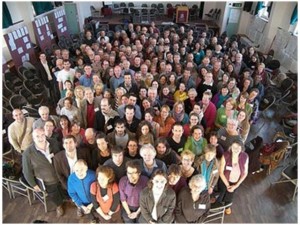 The Transition Towns, Post Carbon Cities, Slow Cities or Swedish Ecomunicipalities movements, among many others that remain non-associated, might be the dawn of a generation of social businesses initiated by responsible citizens that embrace alternative ways of development, empowered through their living communities and fuelled by motivations of responsibility, justice, or food, energy, water or climate security rather than by institutional support. These socially innovative initiatives are proposing a different way of thinking in order to solve the problems caused by prevailing paradigms of obsessive economic growth, cheap energy, wealth accumulation and individualism.
The Transition Towns, Post Carbon Cities, Slow Cities or Swedish Ecomunicipalities movements, among many others that remain non-associated, might be the dawn of a generation of social businesses initiated by responsible citizens that embrace alternative ways of development, empowered through their living communities and fuelled by motivations of responsibility, justice, or food, energy, water or climate security rather than by institutional support. These socially innovative initiatives are proposing a different way of thinking in order to solve the problems caused by prevailing paradigms of obsessive economic growth, cheap energy, wealth accumulation and individualism.
They rely on the assets that exist within communities, reorienting them to resilience-building and to serve the common well-being, while meeting the basic principles of sustainable development. They are happening worldwide through bottom-up driving forces, but they still need to be promoted with top-down incentives if they are to be globally adopted. These incentives should not only spread the voice for the case but also, critically, focus on building the economic viability of community approaches that are socially and environmentally desirable –thus completing, and fundamentally rebalancing, the three pillars of sustainability.
Peter Senge, a guru of organizational design, states it clearly: “If there is any hope for us it lies in rediscovering and recreating community – bringing forth our DNA as social animals into today’s world.” The needed innovation, rather than technological, is social; or, more properly said, systemic.
A reading of some well-intentioned pre-Rio documents (‘Resilient People, Resilient Planet (…)’, the original Draft Zero and Lalonde’s Coordination Notes) with this vision in mind, shows how far they share it. Unfortunately, the well-intentioned vision of these documents has been unable to stand with the power of those who rule the world with visions that are so myopic as the one of the economists referred by Boulding. It is the fatal tragedy of the commons.
Alejo Etchart
Independent Advisor to Stakeholder Forum
Collaborating for the Future We Want
The Good Life 2.0 – Community Resilience In A Changing World
By Davie Philip
“Coming together is a beginning. Keeping together is progress. Working together is success.” ~ Henry Ford
In this Good Life 2.0 article, I want to further explore the themes of collaboration and the art of working together. In these challenging times, joining forces with others is both beneficial and cost effective. However, what I’m excited about is not the need to just save money and muddle through, but grasping this moment as an unprecedented opportunity to rethink how we do things together and create the future we want.
Some of the trends around collaboration that I have covered in this column demonstrate that we are beginning to do a lot more in cooperation with others. These include co-working, co-housing, community owned businesses, community gardens, and GIY gardening clubs and transition towns. Collaborative initiatives like these help us to connect in real and meaningful ways and bring people together to share and relearn the skills of participation and community.
Many people are now recognising the need to act and work together to create a more sustainable world, both for ourselves and for future generations. It has been two decades since world leaders and civil society gathered in Brazil for the first Earth Summit, which popularised the idea of sustainability. Although a number of groundbreaking treaties on climate change and biodiversity were created there, there is a long way to go; but hopefully the era of denial has ended, and there is a growing realisation that the future we want cannot be achieved without all of us working together.
For the last 12 years, through Cultivate, I have coordinated Convergence – an annual festival of sustainable living. As the name suggests, it is all about bringing people and ideas together. Since its beginnings in Temple Bar in 2000, Convergence has featured some of the most inspiring thinkers and doers, both from Ireland and abroad. This event champions the changes needed to create a sustainable economy, society and environment. It has inspired, initiated and highlighted many community initiatives including the Transition Towns process.
The theme this year is ‘Collaborating for the Future We Want’ and rather than just holding a number of events over a week we are collecting and illuminating breakthrough ideas and hosting ‘conversations that matter’ to the end of the 2012. At cultivate.ie we are now collecting details on projects, technologies, and business ideas from across the island of Ireland that represents cutting-edge innovation, collaboration and sustainability. We want to showcase the exciting initiatives that are already helping us make the transition to the future we want.
President Michael D Higgins, who attended the original Earth Summit in Brazil, will open Convergence 2012 in Cloughjordan on June 6th. The programme aims to ignite a national conversation on values and how we can most effectively work together to create a more sustainable future for Ireland. The main event will be held in Dublin’s City Hall on the 20th of June the first day the UN conference celebrating the 20th anniversary of the Earth Summit in Rio de Janeiro. A ‘Host it Yourself’ facilitation guide is also available allow local groups to host their own ‘Convergence’ and feed into the national harvest and findings
To organise Convergence in the current financial climate, we have had to think very differently. In line with the theme of ‘collaboration,’ the project is being crowd-sourced, with the initial idea and production being co-developed with a growing network of collaborators from all over Ireland. Crowdsourcing is a distributed problem-solving process that involves a large group of people, also known as the crowd. To co-create something on this scale means a lot of conversations, a willingness to let go of your initial ideas, an ability to compromise, and the capacity to trust others. It may be a slower process than coming up with the ideas on your own, but the sense of community and shared purpose makes it all worthwhile.
With a curtailment on spending by our regular funders, it has been difficult to get financial support for this Convergence. Funding for Convergence has traditionally come from a small number of agencies and businesses. Our objective this year is to crowd-fund the initiative, to raise the financial support needed to deliver Convergence through targeting a much wider pool of funders for smaller amounts.
This crowd funding approach has many precedents – charities have been doing it for decades. Now, with the rise of social media and micro payment technologies, it is relatively easy to engage and secure investment from a community of interested people. Crowd funding is used for a variety of purposes, from musicians seeking support from fans, to political campaigns, to funding a movie or a startup company. Of course, you need a good idea that is fundable and you need a large base or community to reach out to.
The events of Convergence will use a methodology called World Café; a technique to host conversations around important questions. Another component is the Green and Social Business Incubator, which utilises an approach called Pro Action Café. This process assists individuals, organisations and communities to see new possibilities, clarify purpose and bring projects to successful fruition. The incubator creates a ‘safe’ space where people can speak openly about their project, and is designed to maximise collaboration and peer-to-peer mentoring and support.
Both World Café and Pro Action Cafe are tools from the Art of Hosting community, an international group of facilitators who are exploring participatory approaches for leading, convening and engaging people in meaningful conversation using integrated change processes. An important part of the art of hosting is the art of harvesting, and the facilitation team for Convergence will be gathering the findings from the events and the ideas collected to create an interactive exhibit that will be the main feature of the Global Green area of the Electric Picnic in September
Convergence is bringing people together that are creating pathways that will enable us to flourish in an increasingly challenging world. We are collecting projects that are inspirational, intergenerational, and that help build a sense of community and equality. We are on the look out for ideas that will contribute to changing mindsets, help build a new economy and reduce our impact on the planet. We are searching for technologies that can help us connect better or use resources in a more efficient way. We are hunting for initiatives that reuse, rethink or recycle waste, enhance biodiversity, and reduce fossil fuel use. We want to showcase businesses that look at more than just the bottom line, and educational activities that are transforming the way we think about our world.
Are you a pioneer in this field or do you have a project that fits this description in some way and would like to collaborate for the future we want? Cultivate would like to invite you to get involved in identifying breakthrough ideas and to take part in Convergence.
For more information on how to submit ideas and collaborate in Convergence 2012, see www.cultivate.ie or contact davie@cultivate.ie or tweet at #convergence12
Davie Philip is the director of Convergence and runs the Community Resilience programme at Cultivate. He is a resident of the Cloughjordan Ecovillage and a board member of GIY Ireland. He conceived and directed ‘Surfing the Waves of Change’, a Cultivate short film which introduces the concept of community resilience and can be seen at www.cultivate.ie
For those of us who dream
This is a post from Alejo Etchart Ortiz, a Spanish sustainable development consultant who is now implementing a resilience-building, community approach to sustainable development in small rural areas called RESIVITAS. Here he introduces a vision of a community-based, resilience-building, systemic approach to sustainable development. Alejo also reviews how three of the pre-Rio 20 documents align with this vision of community resilience and comments the feasibility of the approach proposed.
For those of us who dream
For those of us who believe that community living enhances people’s experience of life; who know that systemic resilience is a key ability for our future and that resilience is strongly linked to community living; who know that community living is feasible not only in rural areas or developing regions, but even in Northern cities, although in a lower state; and who want not only to enjoy community living, but, most important, to create replicable models that could be benchmarked in other areas in order to deliver to our kids a livable world, the documents being published before the Earth Summit Rio+20 (20th-22nd June 2012) are a confirmation that we are right.
This post introduces a vision on a community-based, resilience-building systemic approach to sustainable development; then, it reviews how three of the main pre-Rio+20 documents align with it; and finally, it comments how this approach is indeed feasible.
The vision
This vision (‘RESIVITAS’) pursues the realization of a systemic approach through a bottom-up-built social transformation that incorporates the principles of sustainability (as outlined, in Stoddarts’s A Pocket Guide to Sustainable Development Governance) from its grassroots. It is about a development based on a network of sustainable communities at the neighbourhood level that provide themselves with both pro-environmental and not specifically pro-environmental services, from the whole community to its members, peer to peer or from members to the whole community. Community-specific entities with social objectives merge in each community to manage these services, which can be classified, among other ways, in six open-end groups:
- Collective pro-environmental services from the community to its members, either grouped or isolated: distributed energy- generated close to the consumption place, from renewable sources; district heating and cooling solutions combined with CHP plants; optimization of electricity bills through energy saving measures; grey water collection and management; urban agriculture; access to building isolation services, green roofs, vertical gardening and other permaculture practices; composting with bio-residues; re-valuation of books, toys, clothes and shoes, electric, electronic devices and furniture; and others.
- Services without a specific pro-environmental objective delivered from and to people in the community, managed through time banks: care services from young to old people; care and educational services from old to young people or kids; escort and care services to disabled people; public art projects for different groups; courses, including environmental formation to adults; education or consulting from retired professionals to students or young professionals; kids collecting; home cooking services; DIY for home maintenance; specific domestic job services; security provision services.
- Pro-environmental transformation of goods into services, to convert all or part of the following devices (when bought with exceeding capacity for private homes) into new intra-communitarian services: washing machines at home into community laundry services; TV, PCs and multimedia sets into common multimedia rooms; books and shelves into community libraries; particular living room sets into community living spaces
- Services without a specific pro-environmental objective, in the interest of the whole community to foster internal cohesion (zero-carbon economy): concerts, courses and conferences; purchasing groups including assurances, banking and other services; optimization of electricity bills through invoice revisions; children’s gardens; retirement homes; gastronomic societies; shared domestic services.
- Climate Change adaptation services in the interest of the whole community: drainage, retaining walls, shelters for extreme weather-related events.
- Generation of new pro-community business ideas within the context of a New Sustainable Economy (see further below).
A community-specific entity (CSE) is created within each community in order to manage these services within each community. CSEs are social oriented not-for-profit organizations whose eventual profits are invested in the common interest. The objective of CSEs, and of the community-based approach in general, is not the benefit of the communities, but an enhanced life experience of individuals in a way that is compatible with the necessary shift to a sustainable development-compatible path. Community members have interest in their respective communities and get involved to make them progress.
CSEs are promoted from catalyzing consultancies (CC) specialized on the issue that have a wide knowledge of successful partial practices implemented worldwide that can be adapted to new communities and can create self-sustained business models in each community. CSEs make intensive use of the benefits that ICTs can provide to community management. One of the CCs’ tasks is to generate a comprehensive core-system of culturally sensitive training programmes, combining advanced scientific concepts and technology with traditional values, skills, knowledge and muscle-power that exist in each community. Due to the very particular requirements, the wide range of new services and the social mission of CSEs, their leaders receive special training in CSEs networks, where they can share experiences. CSEs’ eventual workers are preferentially community members. CCs generate partially replicable, flexibly designed community-based social business models to be applied globally. Even though the activity of these consultancies is compatible with financial profit, according to the values of RESIVITAS, they should have social orientation.
Traditional companies compete to cooperate for the implementation of CSEs for the different communities, forming joint ventures that gather the different services to be offered to communities. This coopetition fosters a legal, managerial, technical and social innovation.
Communities enhance the space for members to know each other, to give and receive esteem, to flourish, enhancing a positive experience of life. At the same time, having a shared base of material and emotional resources, community members see their exposure to economical, environmental or social unwanted impacts reduced. Thus resilience is increased.
Additionally, material, energy and water consumption, thus pressure over physical resources, is reduced. At the same time, democracy is reinforced as citizens gain voice through their respective communities; and new local jobs are created. This way, communities have the potential to act as the basic unit for promoting a systemic approach to sustainable development. Communities are a manageable development unit that builds development in a bottom-up approach that can be influenced by top-down incentives. This new way of development can proactively be applied worldwide, while remaining essentially driven by local communities.
Emerging socio-economic concepts such as systemic thinking, wellbeing-focused approaches, resilience-building through community-based developments, low-energy societies, and a number of movements around a New Sustainable Economy (including economic re-localization, Green Economy, New Economy 20+20, Economy of the Commons, De-growth, Inclusive Business and Co-management) are reflected and gain sense in RESIVITAS.
RESIVITAS applies systemic development to relatively small groups through a range of globally replicable patterns. It aims at prosperity of individuals based on global wellbeing instead of material abundance. Any shift would require efforts to effect profound changes to the way we live. Nevertheless, RESIVITAS might, at the same time, be compatible with the existing institutional bodies, although it would entail a remarkable re-distribution of power towards more equitable standards. This proposal is therefore a way for civil society to take the lead in the pathway to sustainable development. It is a certainly a challenge to those understandings of sustainable development which proclaim change while leaving untouched the basic structures of the present society.
The name of RESIVITAS might be appropriate for this approach, for it brings to mind the concepts of:
- resilience;
- the Latin civitas, meaning of a body of citizens sharing responsibility, a common purpose, and sense of community; and
- the key syllable RE (standing for Renewable Energy, Reduction, Re-use, Recycle, Re-think, etc).
New contributions
Most of the topics gathered in this vision are hot topics in the development or climate change agendas. None of them are new, and many more community practices can be included, as they are being implemented under Agenda21 approaches and others. The new contributions of this vision are:
-
the systemic approach assumed for facing environmental, social and economic issues; and
-
the community-based social-entrepreneurial solution that appropriates the intrinsic value of the community to deliver a wide and open-end range of resilient building, wellbeing-focused, community-specific services.
RESIVITAS and Rio+20
The Coordination Notes ON THE ROAD TO RIO+20 published by Executive Coordinator to the United Nations Conference on Sustainable Development 2012 (Brice Lalonde) give an excellent overview on the status of the issues to be dealt with in the Earth Summit. Lalonde says that without a driving force nothing will change, and argues that business leaders need to be part of the solution by encouraging experimentation, bringing innovative solutions, invest in R&D and promote sustainable development offshoots and start-ups. Sustainable development entails creative business models such as social service industries, systems of shared resources and products, collaborative ways of consuming, direct trade links from the producer to the consumer, barter economy, second hand markets and recycling industries. Project-by-project approaches may have demonstrable results, but macro approaches are the best way to achieve the major transformations we seek.
Lalonde also demands from Rio+20 concrete action for new models, modernizing SMEs through the use of the Green Economy in three priority areas: social standards, environmental footprint and energy efficiency; and enhancing the social economy sector through cooperatives, community associations, mutual unions, collective institutions in housing, production, health, distribution, etc.
Social entrepreneurship is a new sector that should be recognized and promoted, and Rio+20 should aim to create an implementation-oriented process combining grants and loans; mitigating or sharing risks; facilitating public and private partnerships; bringing in expertise, to match contributions and demand. The demand for sustainable development implementation may be very basic, but it may also provide an opportunity for innovation and new business models. This implementation-oriented process could be critical to the identification of the demand needed by RESIVITAS. Lalonde argues that the demand for sustainable development must be funded through country budgets, sector policy funding, private sector investments and other initiatives. The Social Economy may only thrive with the support of regulatory conditions, including alternative financing systems. If the sustainable development agenda is to move forward, those involved will be looking for measurable impacts and leveraging private and local resources, building incentives and proposals into the system for addressing sustainable development priorities.
The Zero Draft for Rio+20 (‘ The Future we Want ‘) includes a number of calls that reinforce RESIVITAS vision, as summarized below:
• boldness to accelerate the integration of the 3 pillars of SD and holisitc/systemic approaches and a wider implementation of Agenda21 (paragrahs 5, 7, 16, 44. 105)
• role of the private sector and businesses (19, 116)
• creation of resilience (25, 87, 107)
• creation of toolboxes of replicable good practices and of roadmaps to SD (33, 35, 36)
• strengthening citizens involvement (62) towards systemic approaches (72)
• investment in new economy: local agriculture and food production (64), reduced waste(64), trasnparent trading systems (65), reducing water pollution from households (68), higher energy efficiency and use of renewable sources (70) and creation of sustainable communities (73-76)
• capacity-building in community management (as a gender policy: 103)
• … and incorporation of SD in Universities (99) (A full generation of community managers would be needed for RESIVITAS).
Finally, the “Resilient People, Resilient Planet: a Future Worth Choosing”, expected to have equivalent importance to 1987’s Brundtland Report, mentions the neologism ‘resilience’ (‘resiliency’, often in American English) another 30 times apart from the title. Further, so many other quotations reinforce and gain sense in RESIVITAS, among which:
- Spoken presentation by the Presidente of South Africa J. Zuma: “With the possibility of the world slipping further into recession, policymakers are hungry for ideas that can help them to navigate these difficult times“
- “We need to change dramatically, beginning with how we think about our relationship to each other, to future generations, and to the eco-systems that support us“
- “(…) local communities must be encouraged to participate actively and consistently in conceptualizing, planning and executing sustainability policies” (5)
- “Social protection and safety nets are essential tools for minimizing hardship during such periods and have a key role to play in building up resilience more broadly at a time of heightened risk — whether as a result of climate change, resource scarcity, financial instability or spikes in the prices of food and other basic goods” (129)
- “Governments and international organizations should increase the resources allocated to adaptation and disaster risk reduction and integrate resilience planning into their development budgets and strategies” (138)
- “Above all, public investments are critical for projects that offer high social returns but do not provide sufficient financial returns for profit-seeking investors. In such cases, Governments can make the project economically viable (…)” (187)
- “(…) sustainable development is not possible without including local governments and local community organizations (…)” (192)
- “Governments and business should build strategic partnerships between themselves and local communities for the implementation of sustainable development investments” (193)
Feasibility
The success of the Transition Network approach is proving how in the UK, Ireland and increasingly around Europe, communities are flourishing not only to afford a low energy future or to tackle climate change, but to have a better experience of life. Post Carbon Cities in the United States have a similar view, more focused in cities than in rural areas. And there are more movements alike around the world, either in groups of experiences or alone (the case of Loos-en-Gohelle in Pas de Calais, France might stand out as a systemic case of sustainable town).
The case of Cloughjordan, a new development in Tipperary, Ireland, might be a unique case for not only it considers sustainability and permaculture in every aspect of its design; for not only people feel a strong sense of belonging to the community and get involved in its development; for not they it includes a centre for education on sustainable living and a green enterprises development hub; but, most important, there is a shared eagerness to contribute to the global cause by researching, building useful knowledge, spreading the message and becoming a case study either for new developments or for particular aspects for existing ones.
All these approaches are so similar to RESIVITAS, including that they are systemic approaches to SD –in the sense that they consider all common living issues under ‘green’, community wellbeing criteria that includes the economical aspect. RESIVITAS tries to incorporate this economical aspect from the very root of the developments, since the conception of the case. This economic case aims to make the community approach implementation not to either cost extra money to community members or to rely on subsidies to make it workable in the long term. On the other side, it is able to suggest specific new practices to meet community development needs and aspirations, learnt from benchmarks spread around the world, adapted to the multi-dimensional capabilities existing in each specific case. This way, RESIVITAS will propose an economically viable, case-tailored turnkey project to existing communities, whose members will participate in the case design from the roots and will be the beneficiaries.
We, those who believe in community living, have a touch of dreamers. But this time the dream is close to become real.
Alejo Etchart, Stakeholder Forum for a Sustainable Future
Networking for Community Resilience
Deborah Frieze, Walk Out, Walk On.
Filmed in the Greenhouse on 22nd November at the Networking for Resilience event.
Deborah explores the nature of change and introduces the two loops model.
Catalysing Change
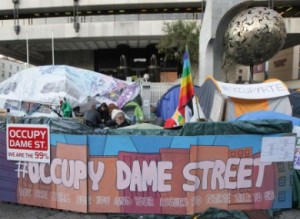 ‘May you live in interesting times’, the ancient Chinese proverb and curse states. Well it seems we are at a pivotal moment in history, this is a period of extraordinary change and things are getting very interesting. Now, with the institutions that we have depended on for so long failing us, and the housing and job situation rapidly deteriorating, anxiety levels are going through the roof. As well as all of this there is a convergence of challenges on the horizon such as the impacts of climate change and resource depletion. But don’t lose heart there is a new world emerging and you can be part of it. Read More
‘May you live in interesting times’, the ancient Chinese proverb and curse states. Well it seems we are at a pivotal moment in history, this is a period of extraordinary change and things are getting very interesting. Now, with the institutions that we have depended on for so long failing us, and the housing and job situation rapidly deteriorating, anxiety levels are going through the roof. As well as all of this there is a convergence of challenges on the horizon such as the impacts of climate change and resource depletion. But don’t lose heart there is a new world emerging and you can be part of it. Read More
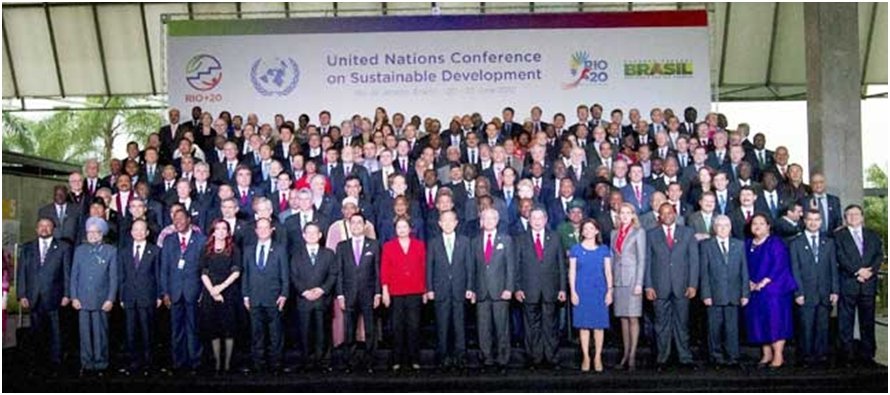



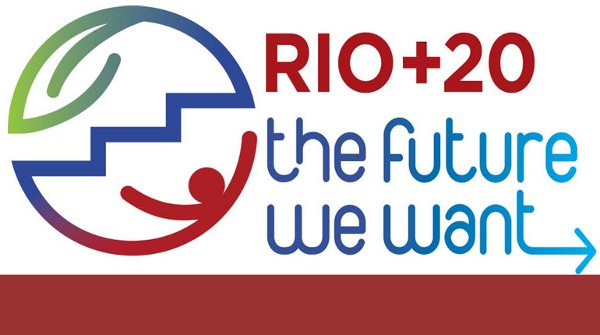

Follow Us!